McLaren F1 GTR: The Unlikely Hero
The McLaren F1 is a legendary road car which has come back into vogue recently. It’s not just high auction prices or concours appearances; with the ongoing development of the GMA T50 supercar, we can’t help looking back on designer Gordon Murray’s first attempt to build the world’s greatest road car. For sports car racing fans, the F1 is doubly special, as it gave us one of the most evocative racing cars of the modern era - the F1 GTR.

This week we take a look at Mark Cole’s excellent two-volume work from Porter Press, entitled ‘McLaren F1 GTR: The Definitive History’, and take a deep dive into the story of this most unlikely of racing heroes. Forget shiny cars on concours lawns - the story of the F1 GTR is one of passion, dedication, and a fair amount of luck!
Written by Hector Kociak for The Apex by Custodian. Edited & produced by Charles Clegg and Guillaume Campos. The Apex team would like to thank Porter Press (https://porterpress.co.uk/) for provision of review materials for this article.
The Origins: Bruce McLaren’s M6 GT
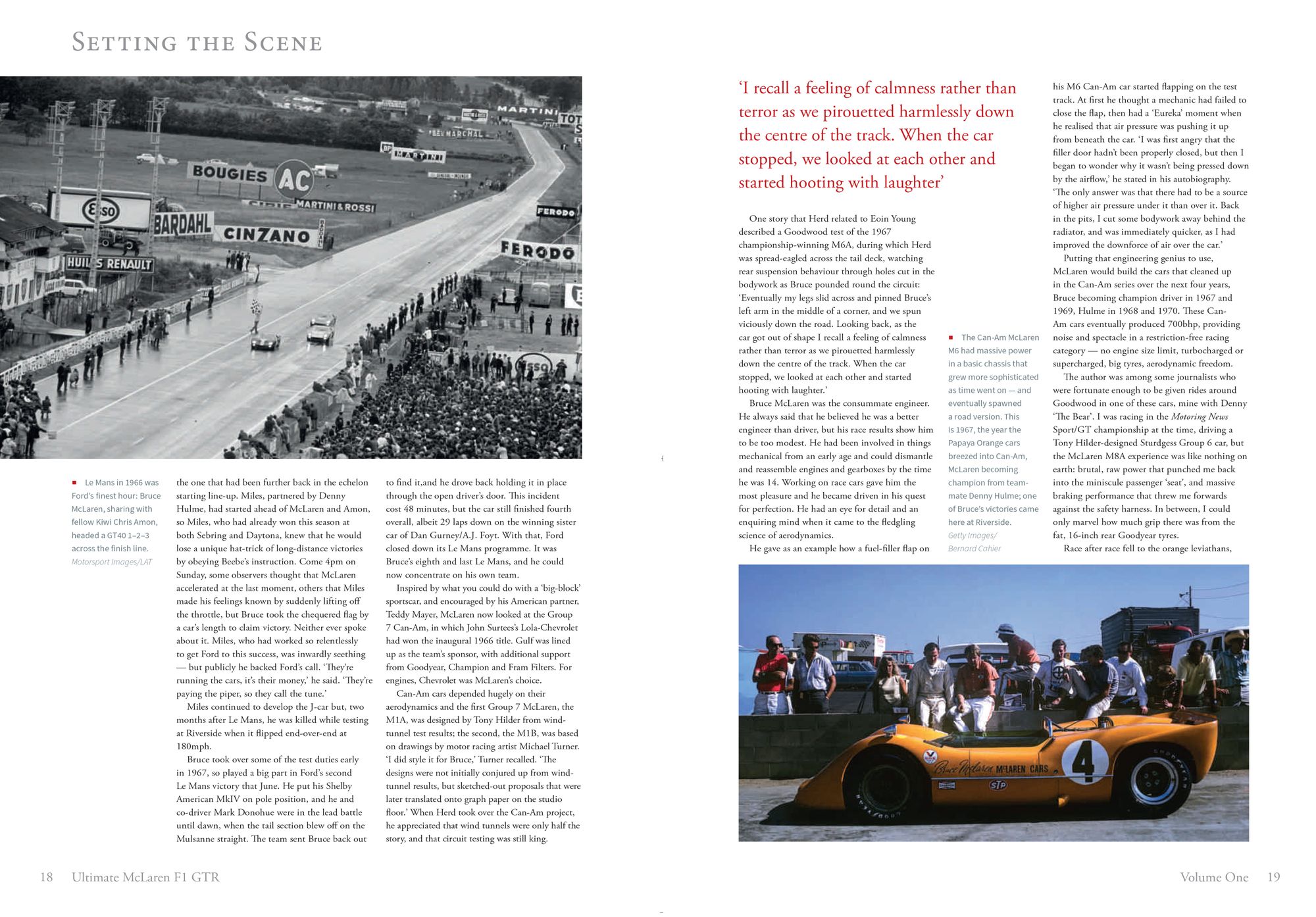
The story of the McLaren F1 GTR really starts with the man who gave his name to the entire enterprise - Bruce McLaren. An equally brilliant engineer and racing driver (and one of only three drivers in F1 to have become a Grand Prix winner in their own car alongside Jack Brabham and Dan Gurney), McLaren and his team became legends in Can-Am racing in the 1960s after dominating Le Mans with Ford in 1967 and F1 prior to that. Bruce had a pet project at the time, to build the world’s ultimate lightweight road car imbued with some of the wild, restriction-free Can-Am energy which he loved. The modern-looking M6 GT prototype designed to take the fight to European exotic car makers was the result, powered by a Bartz-tuned Chevrolet V8 and intended for a limited production run. The project sadly died with Bruce in his fatal 1970 accident at Goodwood - however, the dream of the ultimate road car lived on.
1994: A European Sports Car Renaissance
The curious story of the F1 GTR owes a lot to the twists and turns of the European sport car racing scene. By the end of 1992 there was a gap in the market for a GT racing series, with the FIA killing off Group C racing and concerted efforts from Bernie Ecclestone and Max Mosely to entice major manufacturers into the world of Formula 1. The gentleman drivers who dreamed of success at Le Mans and elsewhere however were still around, and not willing (or able) to devote their lives and bank accounts to the F1 circus. When the BPR International GT Endurance Series appeared in 1994, thanks to the combined efforts of Patrick Peter, Stéphane Ratel and Jürgen Barth of Venturi and Porsche one-make racing fame, it was immediately attractive to the GT racing community. Once again, European circuits would echo with the sounds of two-seater sports cars which actually looked like something you could see on the street. By 1995, the BPR series not only had FIA approval to award points, but sponsorship, enthusiastic crowds and a packed 12-race calendar. And something called the McLaren F1 GTR...
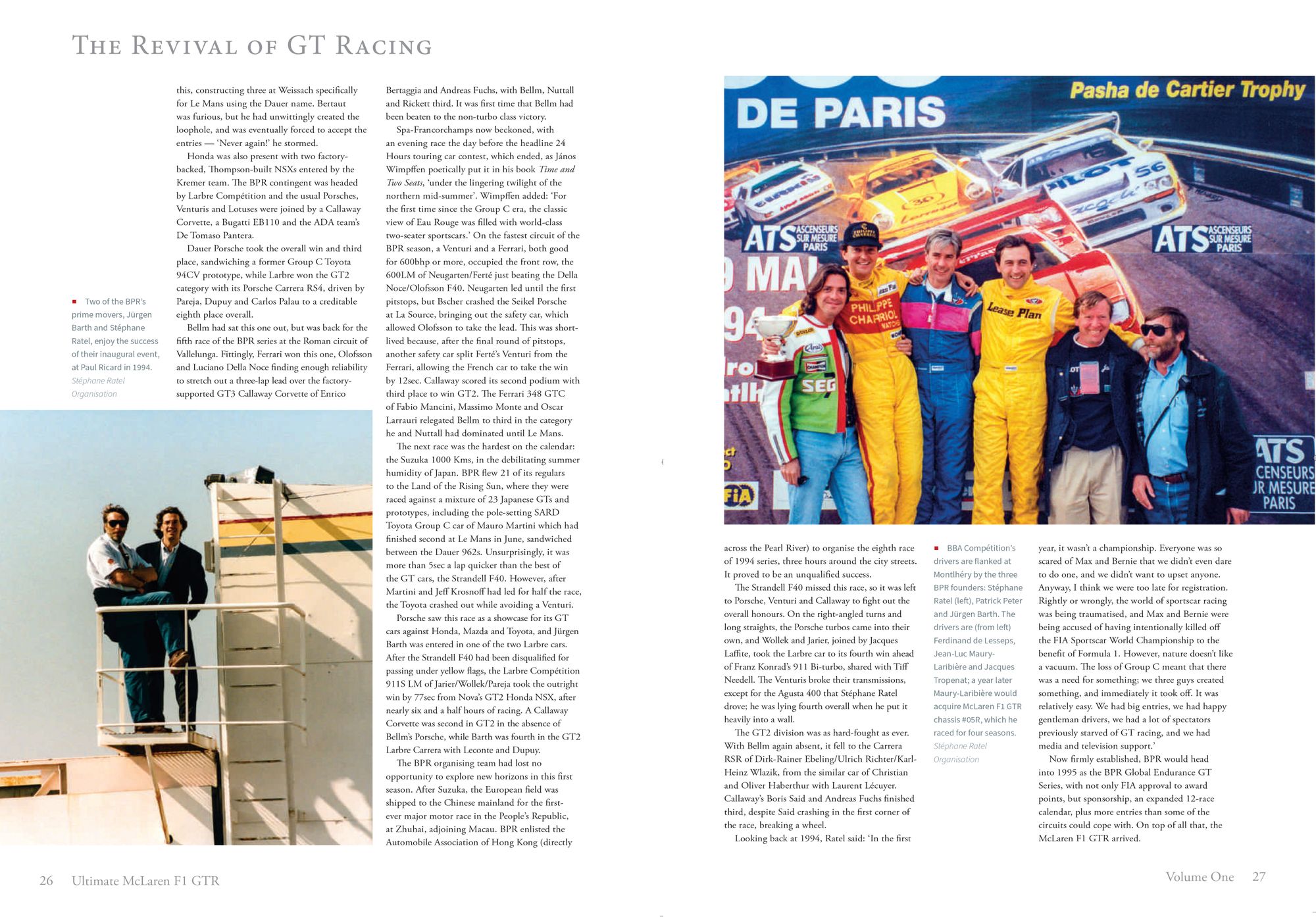
Gordon Murray’s F1 - Not For Competition!

With a glittering career as an F1 designer and a McLaren directorship, Gordon Murray was perfectly placed in the early 1990s to embark on a road car project with the blessing of Ron Dennis. With the intention to make a sports car to rival the best Italian creations, Murray created the McLaren F1, launched at the Monaco Grand Prix in 1992 as the world’s first ground-effect carbon road car packed with cutting edge technology and an incredible lightweight. 6.1l BMW S70/2 V12. Quickly christened the ‘Car of the Century’ by the media, Murray was nonetheless adamant that the F1 was not to go racing - it was too softly sprung, and the entire design brief had been to create the ultimate driving (and not racing) machine.
However McLaren had not reckoned with the pluck and determination of a number of gentleman drivers including German banker Dr Thomas Bscher and pharmaceuticals entrepreneur Ray Bellm, both accomplished racers who quickly expressed interest in racing this ground-effect, carbon-fibre, lightweight car powered by a BMW V12.
After a lot of badgering of Ron Dennis and some financial calculations by the McLaren board, Bscher and Bellm got their way. Murray managed to pull together an aero kit after a day’s testing at the NPL in Teddington; under the mantra of “no time, no money, keep it safe”, the initial F1 GTR builds (beginning with chassis no.19) were completed in four months and involved minimal necessary changes to roadgoing F1s. Much was thrown away - trim, sound deadening, exhaust system - and essential upgrades were made to the suspension and braking systems. Air conditioning, which would have cost 8bhp, was out - as well as the innovative twin fans of the original design. The BMW V12, aside from being remapped to put out less power, remained a standard road car engine. As the 1995 BPR season arrived, and with nine customer F1 GTRs produced, it was time to go racing after all.
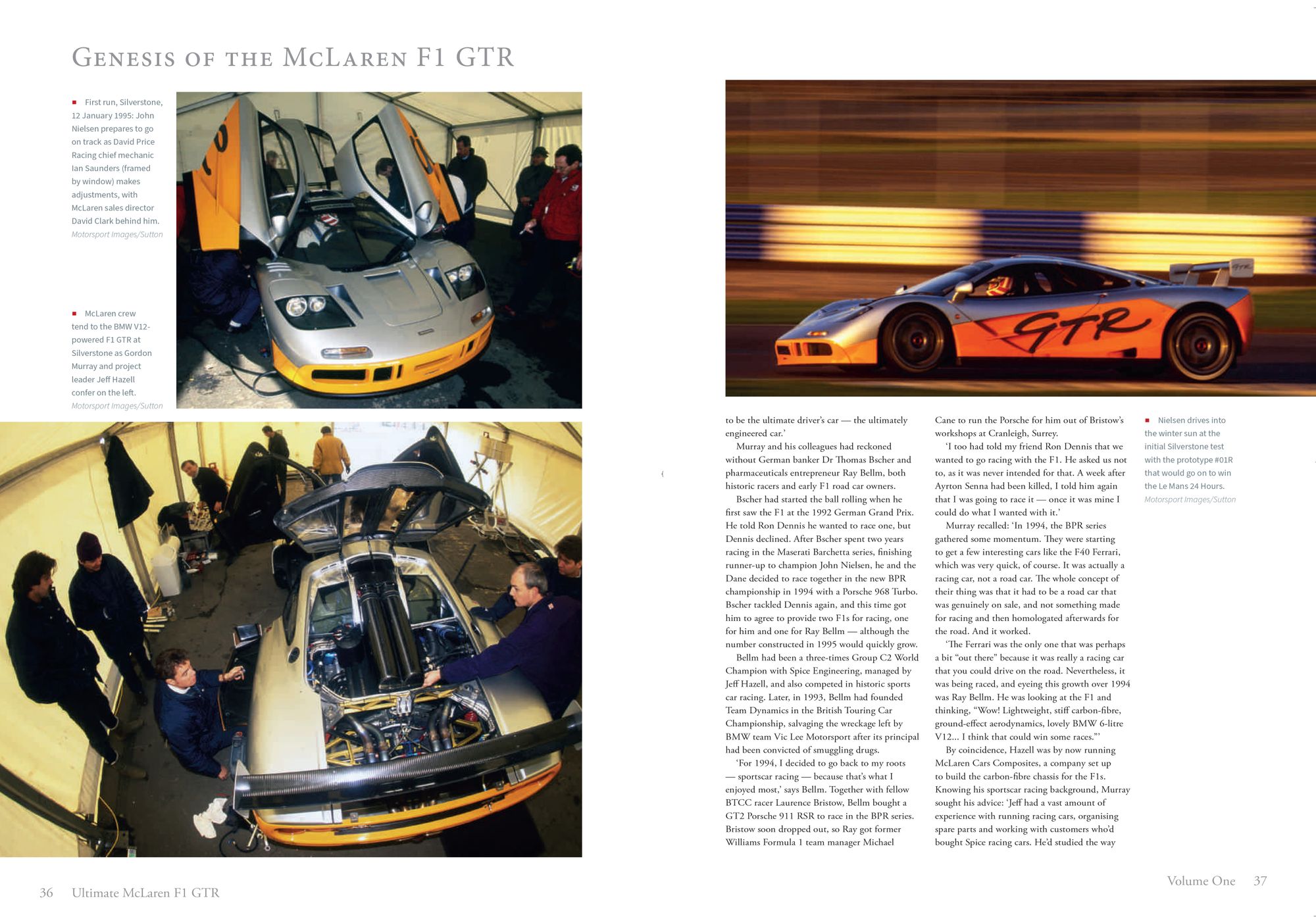
Going Racing And Le Mans

1995 was the year it all came together, with the BPR Global GT Endurance Series attracting a field of 65 cars from 15 manufacturers which not only helped engage fans and sponsors, but also boosted the numbers for that years’ Le Mans 24 Hours. In the middle of all of this were the F1 GTRs, with their wonderful liveries and, as it turned out, scintillating racing performance. The Bellm/Sandro Sala Gulf Racing F1 GTR took the win at the first race of the season in the Jerez 4 Hours, and more victories followed at Paul Ricard and Monza (the latter for the Nielsen / Bscher DPR Davidoff entry). At the Nürburgring 4 Hours, the F1 GTRs were absolutely dominant, taking the top five places, and over the course of the season the F1 GTR would end up taking 10 of 12 rounds.
Of course, the most interesting turn of events in 1995 was at Le Mans. Despite the breathtaking performance of the F1 GTRs in the BPR series, Gordon Murray and McLaren were wholly opposed to 24h racing for the F1s - a Grand Prix season in a day. The gentleman drivers continued to push their demands however, and eventually McLaren agreed to provide a ‘Le Mans’ kit including carbon brake discs, NACA ducts, a new aero kit with a smaller wing for higher speeds, and additional engine cooling.
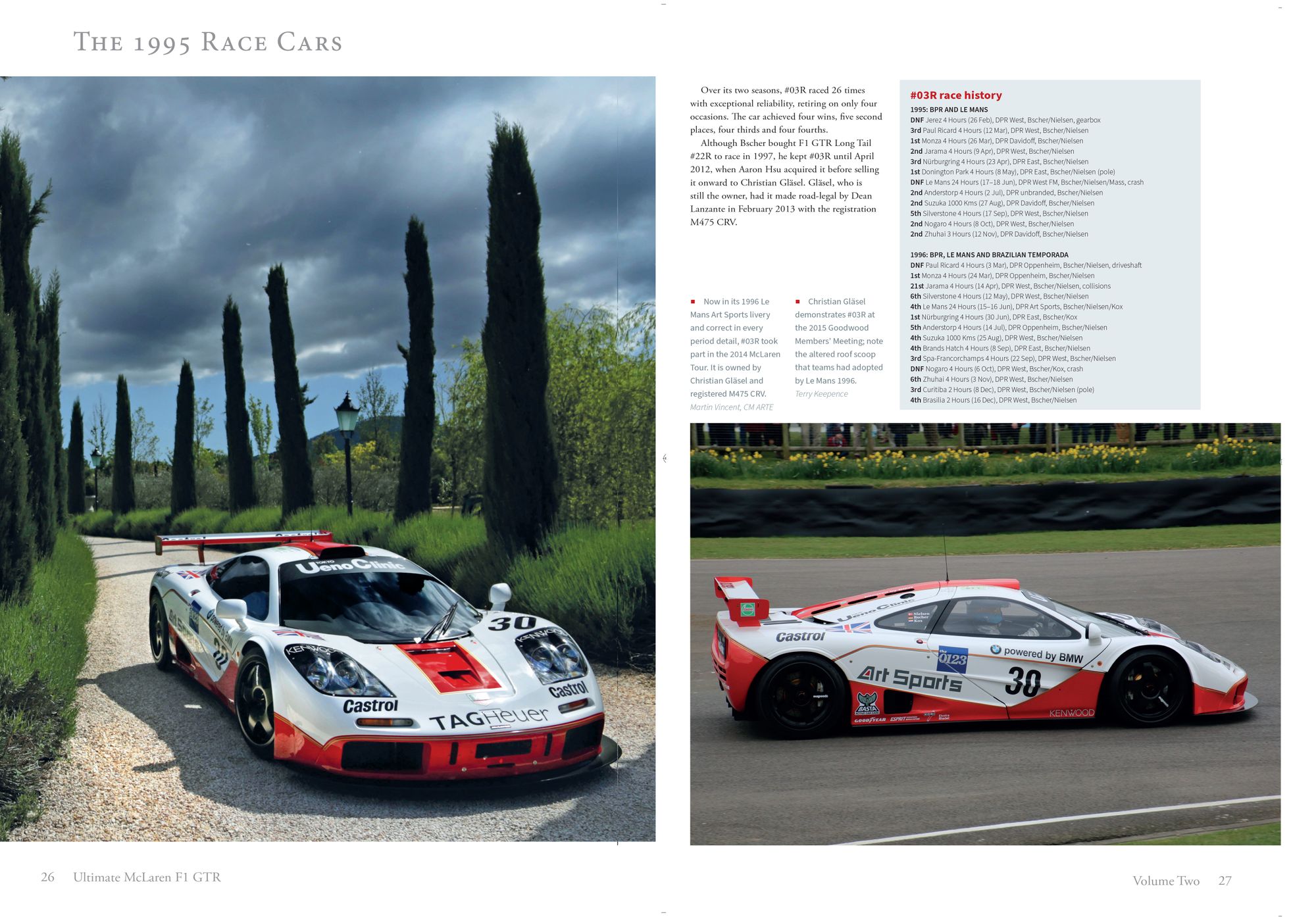
While the customer F1 GTRs ran impressively at pre-qualifying, most curious was the Paul Lanzante-run Kokusai Kaihatsu car, which was actually the prototype 1995 GTR test car chassis 01R, rebuilt and fettled for Le Mans at the behest of Motokazu Sayama, owner of the Ueno Clinic in Tokyo. Sponsorship from this chain of health clinics (which also offered vasectomy services) quickly earned the car the nickname of ‘Snippit’ from its mechanics; the other customer teams were more concerned with what looked like a works entry turning up to disrupt proceedings with a brace of experienced drivers in JJ Lehto, Masanori Sekiya and Yanick Dalmas.
While the tensions over the Ueno Clinic car continued to rumble into the main event at Le Mans, the 01R crew knuckled down in one of the wettest Le Mans races on record and managed to claw their way to the top, catching the Harrods-liveried GTR an hour from the finish. Both McLaren and Lanzante had done something extraordinary, winning Le Mans on their debuts - a feat only achieved by Ferrari previously in 1949. Four of the top five finishers were also McLaren F1 GTRs, a testament to the design and engineering of this unique car.
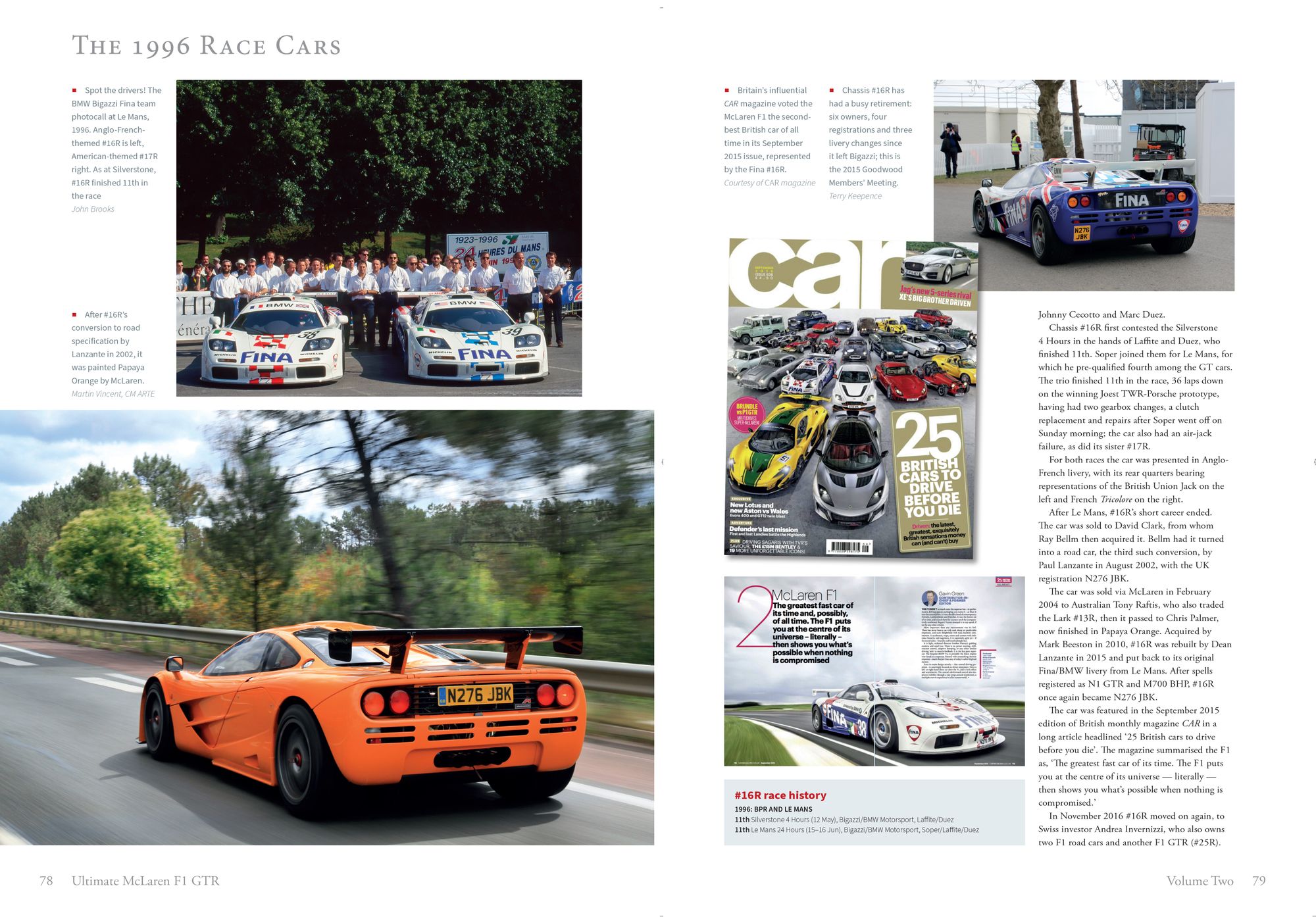
End Of An Era… And More
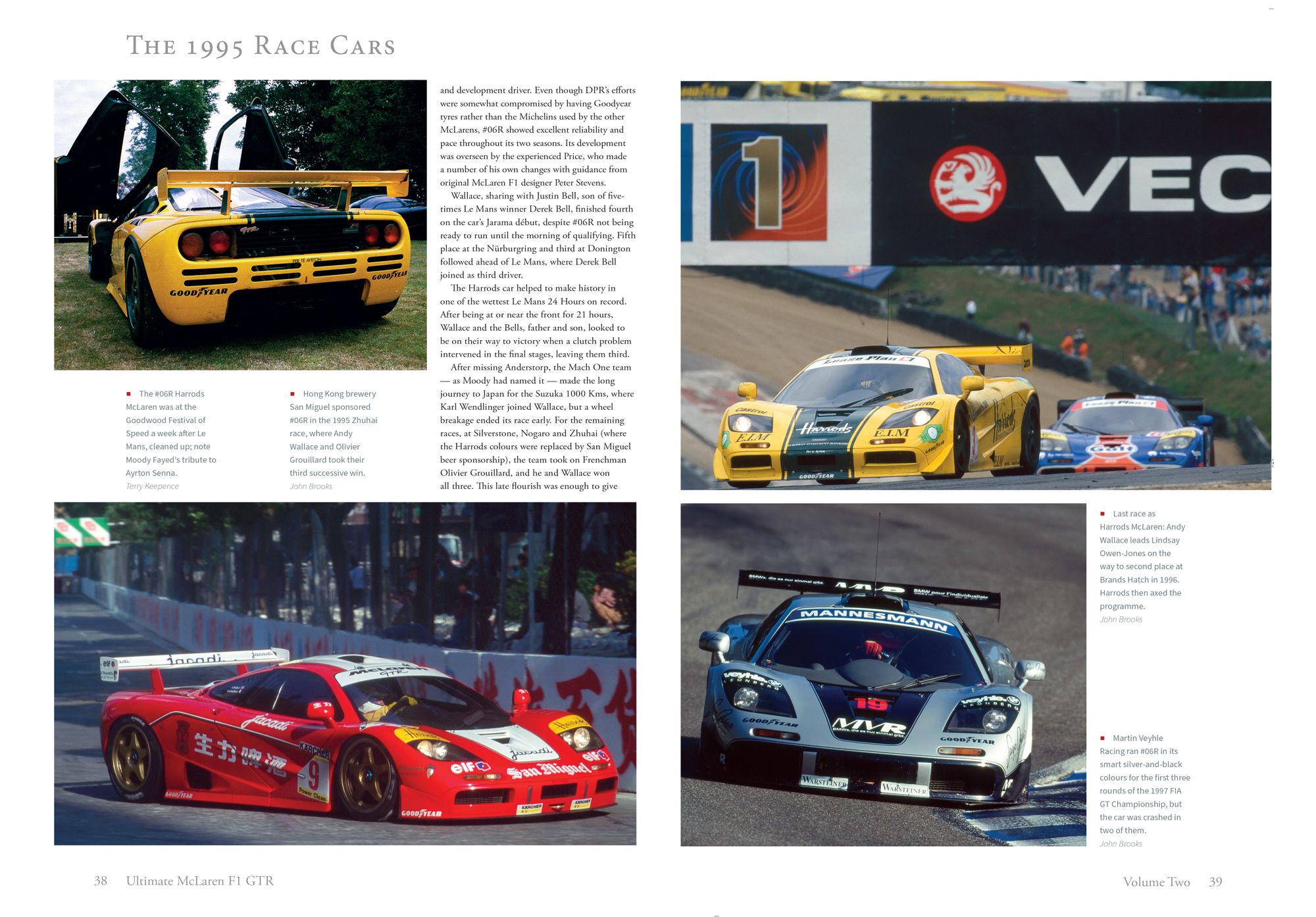
Aside from the stunning feat of victory at Le Mans, the 1995 and 1996 BPR seasons were dominated by the F1 GTR. From 1997, despite strong performances from F1 GTR teams, rival manufacturers such as Porsche and Mercedes began to push the envelope of technical development, and before long the emergence of the advanced GT1 class as part of the FIA GT Championship and the slow ebbing away of privateer racing teams saw the GTR lose its edge as a racing machine. It wasn't all bad however, as the late 1990s also gave us the GTR Long Tail, the swansong of the racing GTR and a photo favourite for many racing fans...

While Cole’s work documenting the racing history of the GTR in Volume I of this book is excellent, Volume II of ‘The Definitive History’ contains some truly superb content for the committed F1 GTR aficionado. Each racing chassis is covered with lavish photography and in-depth information, and is a fantastic resource if you are curious about the life of a particular car. It contains biographies of important individuals in the F1 GTR story - Ron Dennis, Jeff Hazell, David Clark, and more - as well as covering some of the more important privateer teams to run the F1 GTR successfully, such as Gulf Racing and David Price Racing. There is a fascinating treatment of the Kokusai Kaihatsu Le Mans effort too, as well as Cole’s own in-depth coverage of the endurance racing drivers who piloted these special cars. You couldn’t really ask for more from an authoritative work on the F1 GTR, although there is more. Chapter 18, covering road-legal conversions of the F1 GTR, contains some brilliant photographs and interviews with owners past and present including Adrian Newey and Nick Mason, and it is particularly nice to see a chapter devoted to Paul and Dean Lanzante, arguably the world’s top restoration specialists for McLaren F1 GTRs.
If you hadn’t gathered by now, ‘McLaren F1 GTR: The Definitive History’ is essential reading for anyone seriously interested in this iconic racing car. Mark Cole and Porter Press deserve particular praise for their painstaking research and efforts to source over 775 period photographs which richly illustrate the F1 GTR story, as well as providing a readable and genuinely interesting narrative. You really couldn’t ask for a better work about a racing car which to this day retains its ability to fascinate enthusiasts and professionals alike.
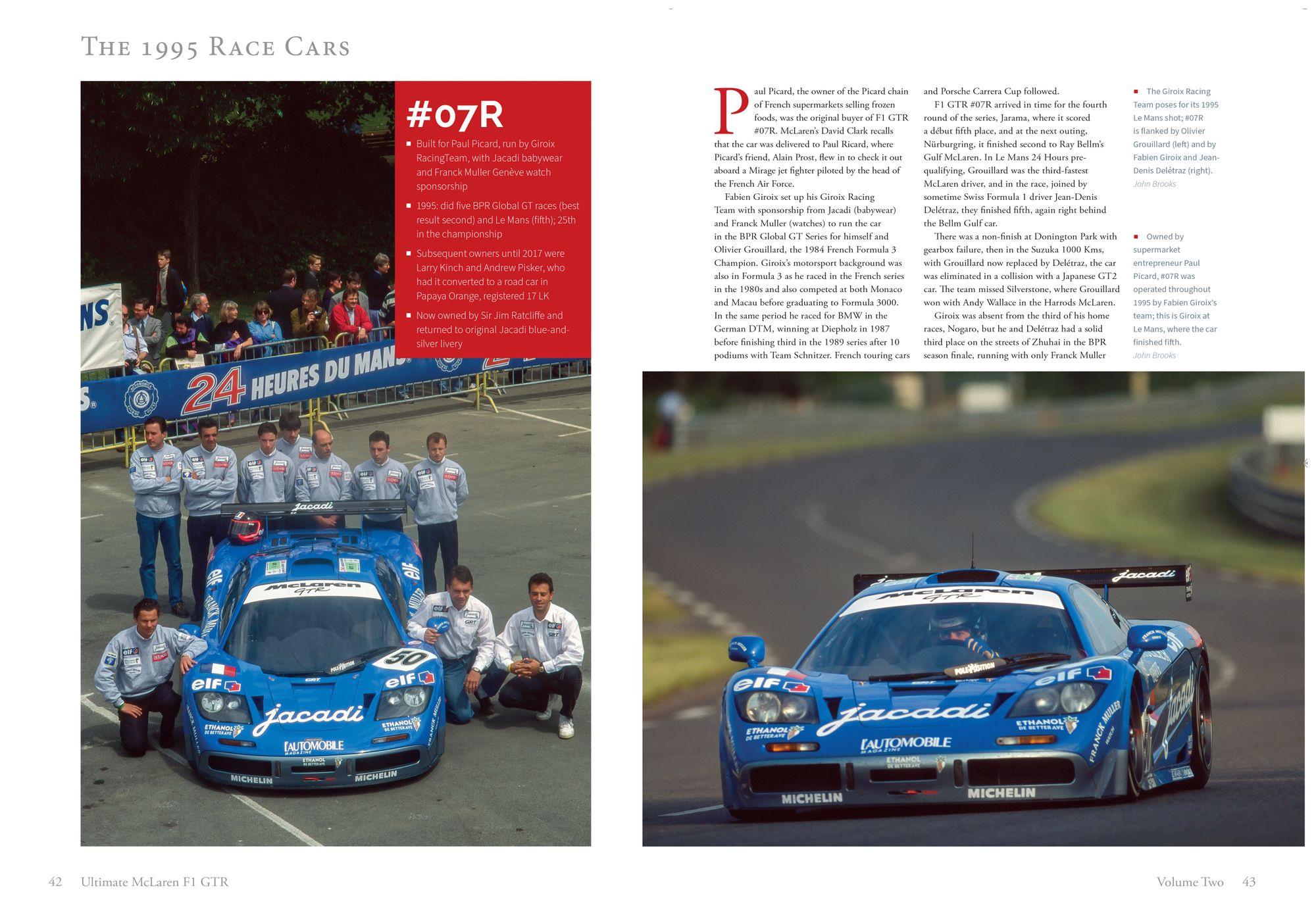
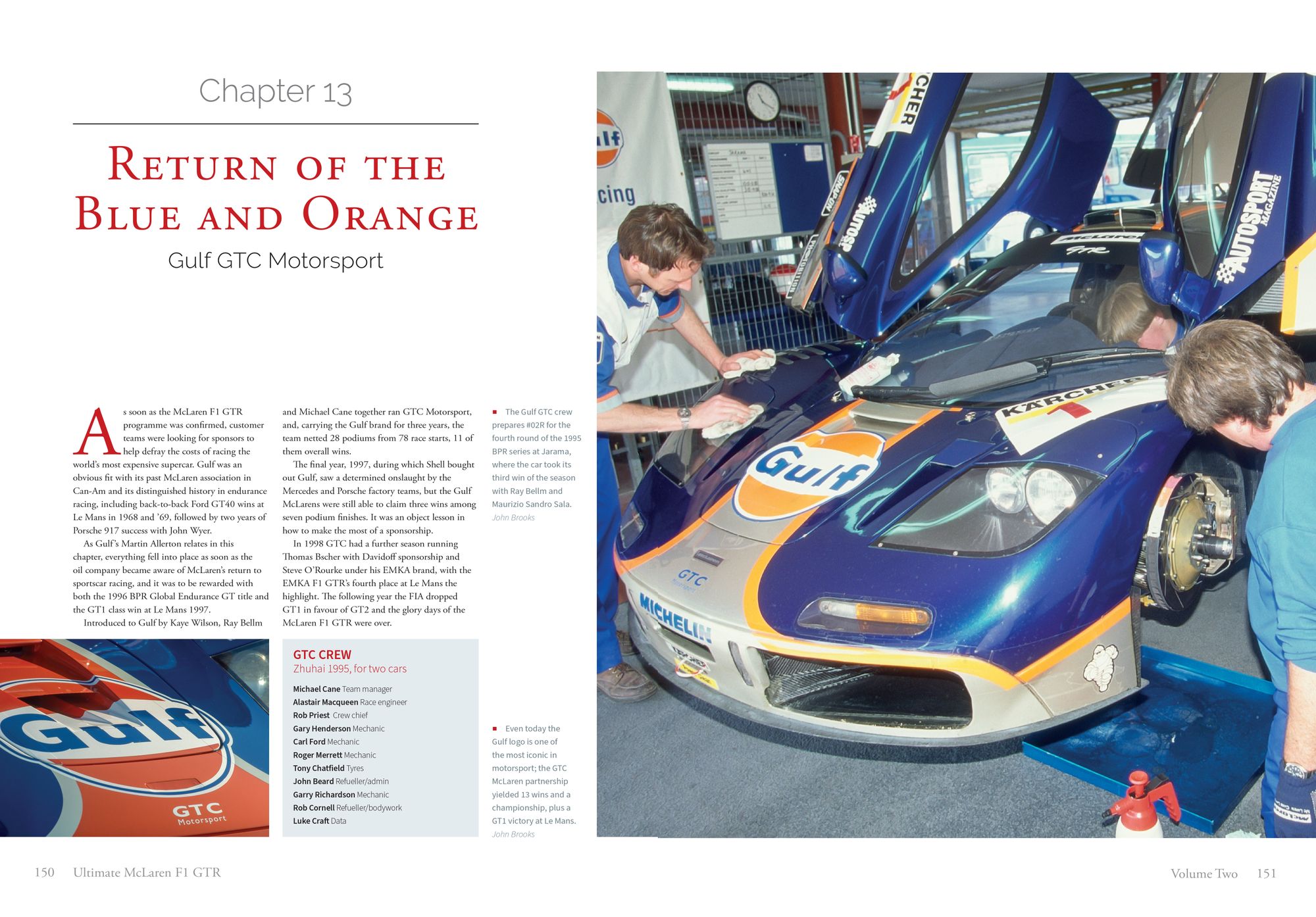
‘McLaren F1 GTR: The Definitive History’, in a limited edition of 1000 copies numbered and signed by the author, is available from https://porterpress.co.uk/products/mclaren-f1-gtr-definitive-history. The Apex team would like to thank Porter Press for provision of review materials for this article.

